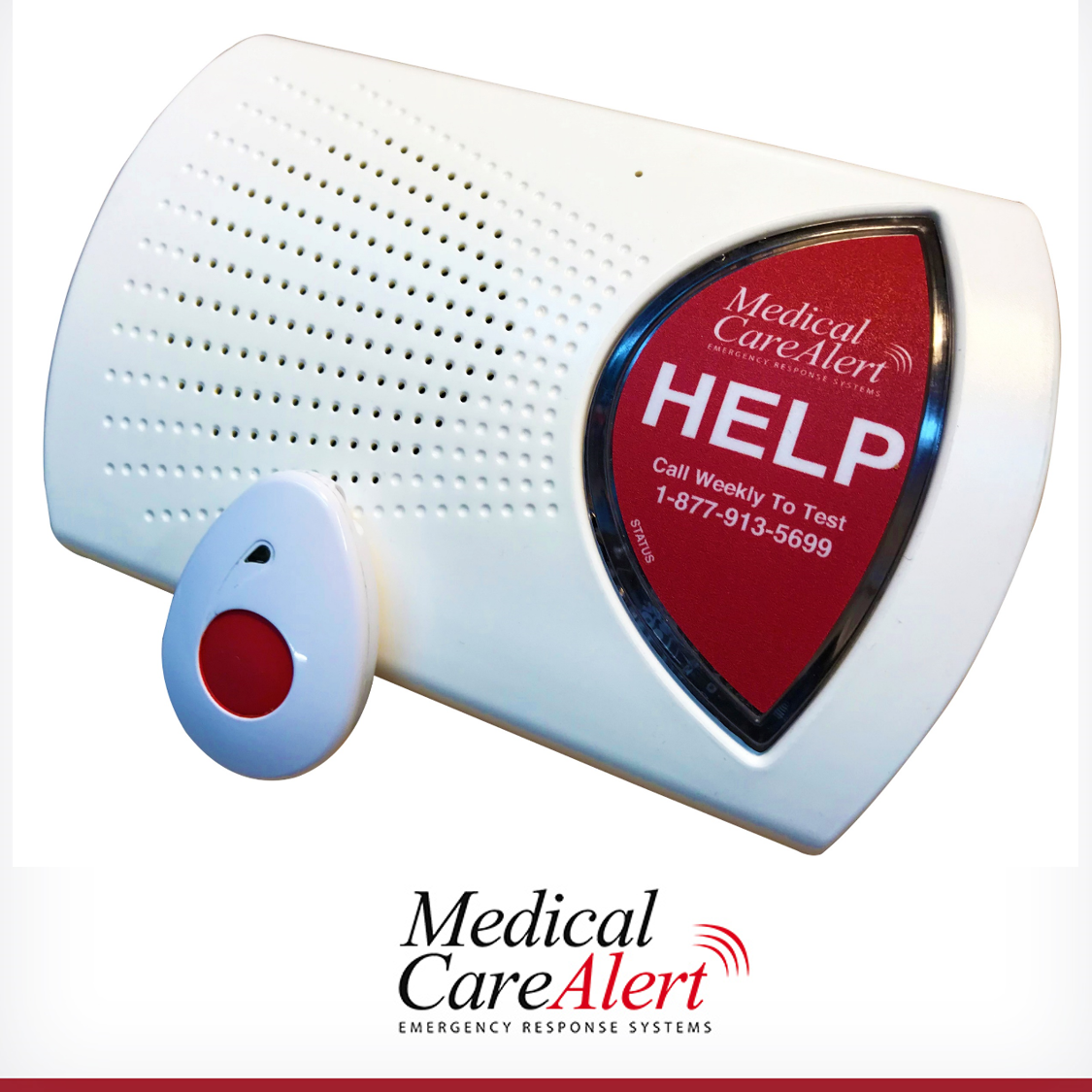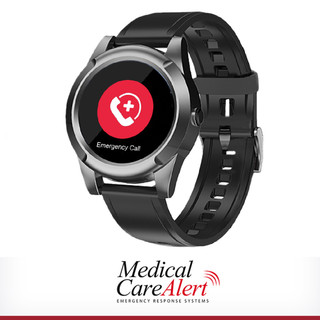Emergency Call Buttons for the Elderly
Medical Care Alert makes taking care of your folks easier with the help button in the form of a mobile system, HOME system or SmartWatch. These buttons can be lifelines for those with limited mobility or health challenges. Seniors can effortlessly call for help in an emergency with the press of a button.
It's essentially like a 911 button for the elderly, directly connecting to our trained emergency agents. For the fashion-conscious, they can dress up their Medical Alert Button with our Jewelry Pendant Holder. No matter where your parents, grandparents or elderly family members live, our systems provide reliable service across all 50 states.
Your mom and dad can wear the medical alert button around their neck as a pendant or on the wrist with our bracelet option — they can even put the button on their belt clips.
Choose The Right Emergency Call Button For You
HOME & AWAY MINI With AutoFALL Detection
Go anywhere in the USA with built-in fall detection sensors. Speak directly into the pendant if you need help. GPS location services and cellular communication in a small 2 ounce Shower-Safe pendant.
$49.95 / Month
HOME with AutoFALL Pendant
For folks who want fall detection in and around the home. Pendant has 400 foot range from the base station. No landline? No Problem! Add cellular communication if no landline phone in the home.
$39.95 / Month
SmartWatch PRO With AutoFALL Detection
Our SmartWatch PRO mobile medical alert system features automatic fall detection on the wrist. It's lightweight and shower-safe. Includes pedometer and heart rate monitor.
$49.95 / Month
Choosing the Right Emergency Call Button
When you are looking for the right emergency call button, we recommend looking for the following features:
24/7 monitoring capabilities: With devices offering both home and mobile coverage, your loved ones are protected wherever life takes them. The 24/7 monitoring from EMT-certified agents turns our medical alert devices into a lifeline.
Waterproof options: Some of our wearable help buttons for the elderly are waterproof, and others are splash-resistant. We always suggest not submerging them in water.
Long battery life: The batteries on our HOME Emergency Medical Care Alert Systems can last for five to seven years without charging or replacing them. The HOME & AWAY GPS has a three-day battery life, and the SmartWatch PRO has up to 48 hours of battery life.
Panic buttons that call family directly: Panic buttons that can call family members are invaluable tools. In an emergency, they can easily reach family members who know their needs and medical history. Hearing a familiar voice during a stressful moment can bring comfort and reduce anxiety — helping seniors feel supported while waiting for further assistance. Not all emergencies require medical attention. For example, getting locked out of a home can be scary, so being able to contact a family member directly allows them to resolve the situation faster.
GPS tracking for active seniors: Active seniors can confidently enjoy outdoor activities like walking, gardening or social outings without worrying about being unreachable in case of an emergency. Our HOME & AWAY GPS and SmartWatch systems allow responders to pinpoint their exact location quickly. Our SmartWatch system has two-way communication with fall detection and heart rate monitoring — which can identify irregularities such as unusually high or low heart rates for real time health monitoring.
Find the SOS Button That Fits Your Needs
Our top-rated emergency call buttons available include:
Who Should Use Medical Alert Devices?
Anybody can get a medical alert device, but they are ideal for:
- Seniors living alone
- Individuals living alone
- Active older adults who love getting out and about
- Older adults who want to feel safer at home
- Elderly who are prone to falls
- Post-surgery patients
- Anyone seeking extra peace of mind
Benefits of Emergency Call Buttons
An emergency call button provides invaluable support for seniors looking for independence and the following:
- Peace of mind — allows seniors to age in place safely
- Provides reassurance to families and caregivers
- Immediate access to help
- Direct connection to emergency services or family members
- Faster emergency response because every second counts in a crisis
- Reliable coverage
FAQs About Panic Buttons for the Elderly
Find out more about our products and services with these frequently asked questions.
Is there an elderly panic button that calls family?
Yes, many of our devices allow you to call family members directly. You can also program our Medical Care Alert systems to notify multiple contacts.
Are emergency call buttons suitable for assisted living facilities?
Yes, emergency call buttons are perfect for enhancing safety in private homes and care facilities. They're easily integrated into existing care routines.
Can the emergency call button be worn in the shower?
Yes, you can wear any of our emergency call buttons in the shower as they are shower-proof.
Why Choose Medical Care Alert?
At Medical Care Alert, “Care” is our middle name. We are a family-owned, operated and trusted provider in all 50 states. We offer comfort, independence and peace of mind to seniors and their families. With features like a 1,000-foot range, nationwide service and battery backup, seniors are protected at home or on the go, no matter the circumstances.
All emergency operators are based in the USA and are EMT/ETD Certified. We provide a free lockbox to hide a key so emergency medical services (EMS) don't have to break down the door to provide help.
Get Help 24/7
Investing in an emergency call button isn't just about safety. It's about empowering seniors to live confidently and securely with help at the touch of a button. Call us today at 855-272-1010 to learn more or sign up.


